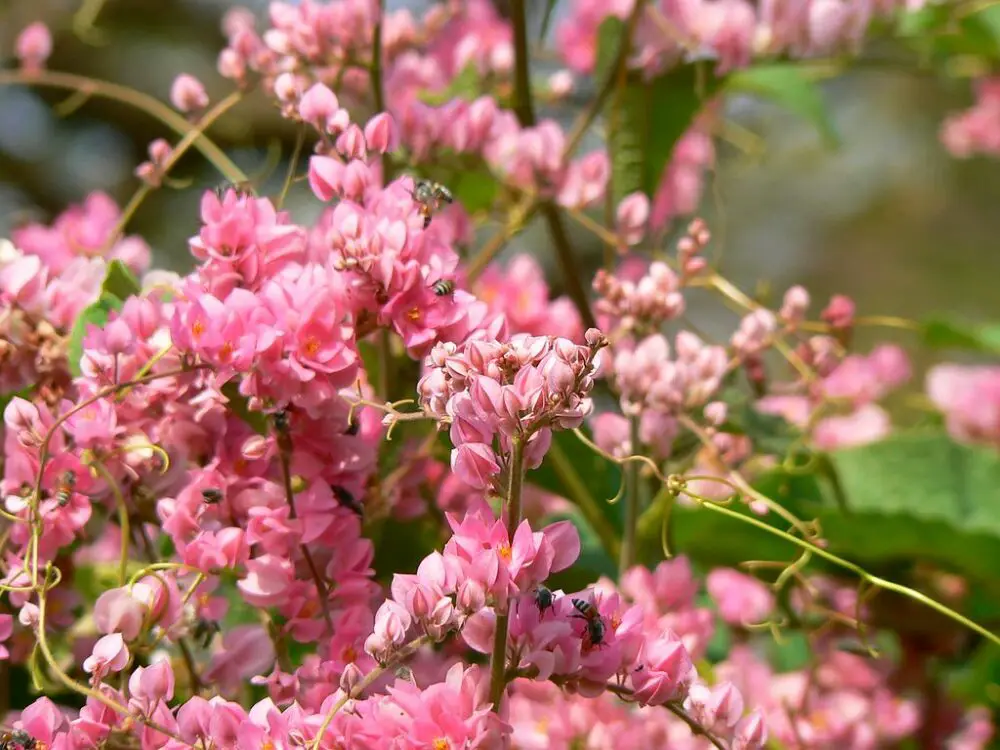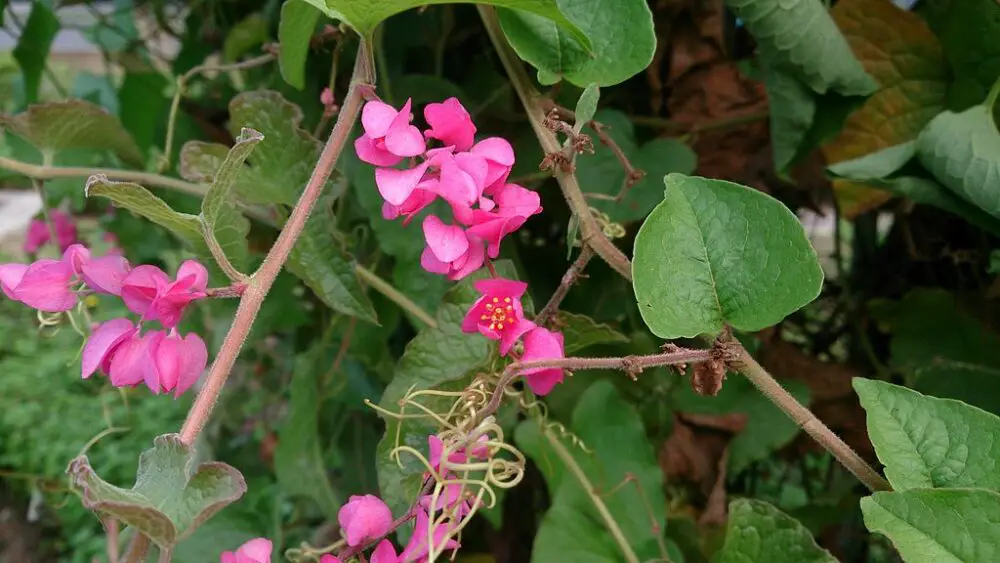Antigonon leptopus, aptly known as coral vine or Mexican creeper, is a tenacious and swift-growing vine native to Mexico. It prefers warmer, more tropical locations like USDA hardiness zones 9 to 11. Foragers looking for entirely edible wild plants will be glad to know that you can eat every part of the coral vine.
Coral Vine Plant Profile
Coral vine is a common name shared by the flowering plant species Kennedia coccinea from the Fabaceae family and the Antigonon leptopus from the Polygonaceae/buckwheat family.
Coral vine is an easy-to-care, long-lived, and tuberous-rooted vine, making it an excellent option for beginner gardeners. It uses its tendrils to climb far and wide.
A lengthy bloom from spring through late summer to fall means plenty of foraging time. In some tropical locations, an all-year-round bloom time is also possible.
What Are You Foraging For Right Now?
We're thrilled to hear your ideas. What would you like to submit today? Feel free to share your thoughts and experiences with us.
As a prolific seeder and climber, the Antigonon leptopus often earns itself a new nickname wherever it grows.
Some of its most common names include:
- Tallahassee vine
- Honolulu creeper
- The Christmas Island drawler
- Confederate vine
- Mexican coral vine
- Chinese love vine
- Chain of love
- Queen’s jewels
- Desert bleeding heart
- Queen’s wreath
This impressive, fast-growing climber can grow to 12 meters in the right sunny conditions.
As a prolific seeder, grower, and climber, Antigonon leptopus is a perfect addition to garden structures, trellis, fences, and unsightly walls.
How to Identify Coral Vine
It’s easy to spot and identify this creeping vine.
- It boasts dramatic white, dark rose, or coral pink flowers arranged in panicles from pink to white.
- Its pale-green leaves are arrow or heart-shaped and usually grow to an impressive four inches long.
- Coral vine leaves are also crinkly edged with reticulated veins. These veins look wrinkly and are easy to identify.



Is Coral Vine Invasive?
Adding coral vine to your garden can be an excellent way to brighten your landscape. But, you may want to consider its invasiveness before you do.
The Antigonon leptopus is relatively easy to grow and establish, which is perhaps why this fast-growing Mexican creeper can take over the tidiest of gardens once established.
This vine uses its underground tubers to spread swiftly until it crawls over and smothers other plants. Antigonon spreads its seeds to a great distance by pollinators, water, wildlife, and birds, meaning this epic self-seeder can repopulate the surrounding ground swiftly.
This Mexican creeper is an invasive plant in some of these more tropical South American locations, such as Florida.
But, in drier, more dessert locations of the U.S., for example, Arizona, this fast-growing vine is not considered invasive.
Where Does Coral Vine Grow?
Being native to Mexico and cultivated in South America, Antigonon leptopus prefers tropical, warmer climates. This full-sun lover thrives in moderate moisture and well-draining soils.
But it’s no stranger to a dry day to two and somewhat drought tolerant. Although, the coral Vine appreciates consistent moisture during the growing season.
Coral vines prefer hardiness zones 9 through 11 but can survive in cooler climates, where they may lose their leaves.

Are any Parts of Coral Vine edible?
The entire coral vine is edible.
Although this is a native Mexico plant, like other completely edible perennial species, the coral vine has traveled the globe as an edible plant.
Some of its most common uses include:
1. Cooking
- Thailand’s locals often take the coral vine blossoms’ flowers, coat them in flour, and fry and serve them on top of noodles.
- Coral vine blossom is also a key ingredient in some Thai omelets and salads.
- Even the seeds can be used to make flour when roasted, winnowed, and ground.
2. Tea
- There’s more to the coral vine than just its pretty looks. Because the leaf extract and flowers inhibit lipid peroxidation, it can be used as an anti-inflammatory and analgesic tea.
- Make tea from the aerial parts as a medicinal aid to treat sore throats, coughs, and flu.
- Leaf tea is a known treatment for high blood pressure and diabetes.
Coral Vine Growing and Propagation
Coral vines are easy to propagate, grow and maintain due to their prolific and hardy nature. It’s simple to reproduce via seeds or by using a mature plant.
When growing coral vine, keep these tips in mind.
- Although adaptable to nearly any well-drained or poor soil, it does best in tropical locations with moist soil.
- Antigonon leptopus thrives in full sun but can do well in partial shade.
- Give coral vine plenty of room to spread.
- Provide sturdy support like a trellis, so this high climber can use its tendrils to grow.
- Water often during the first growing season, so this climbing vine gets off to a good start.
- Once established, the coral vine will become pretty drought tolerant. Only occasional irrigation is needed. Even hot, dry weather only requires weekly watering.
- Prune your coral vine every last winter or early spring to make sure it doesn’t take over the surrounding foliage. But don’t forget to trim throughout the year.
- You can also shear the plant straight to the ground in late spring. You’ll be surprised how quickly it bounces back.
- Lastly, this fast-growing native of Mexico requires no fertilizer. But, it doesn’t hurt to douse it with a general, all-purpose fertilizer when growth is weak during the growing season.
Getting into the great, wet outdoors in search of edible plants, herbs, fruits and fungi is one of Sarah’s favorite outdoor pursuits. She thinks there’s nothing better than combining her passion for hiking with the start of the foraging season. Sarah’s definitely not afraid of a little rain and dirt, it’s all part of the fun.

